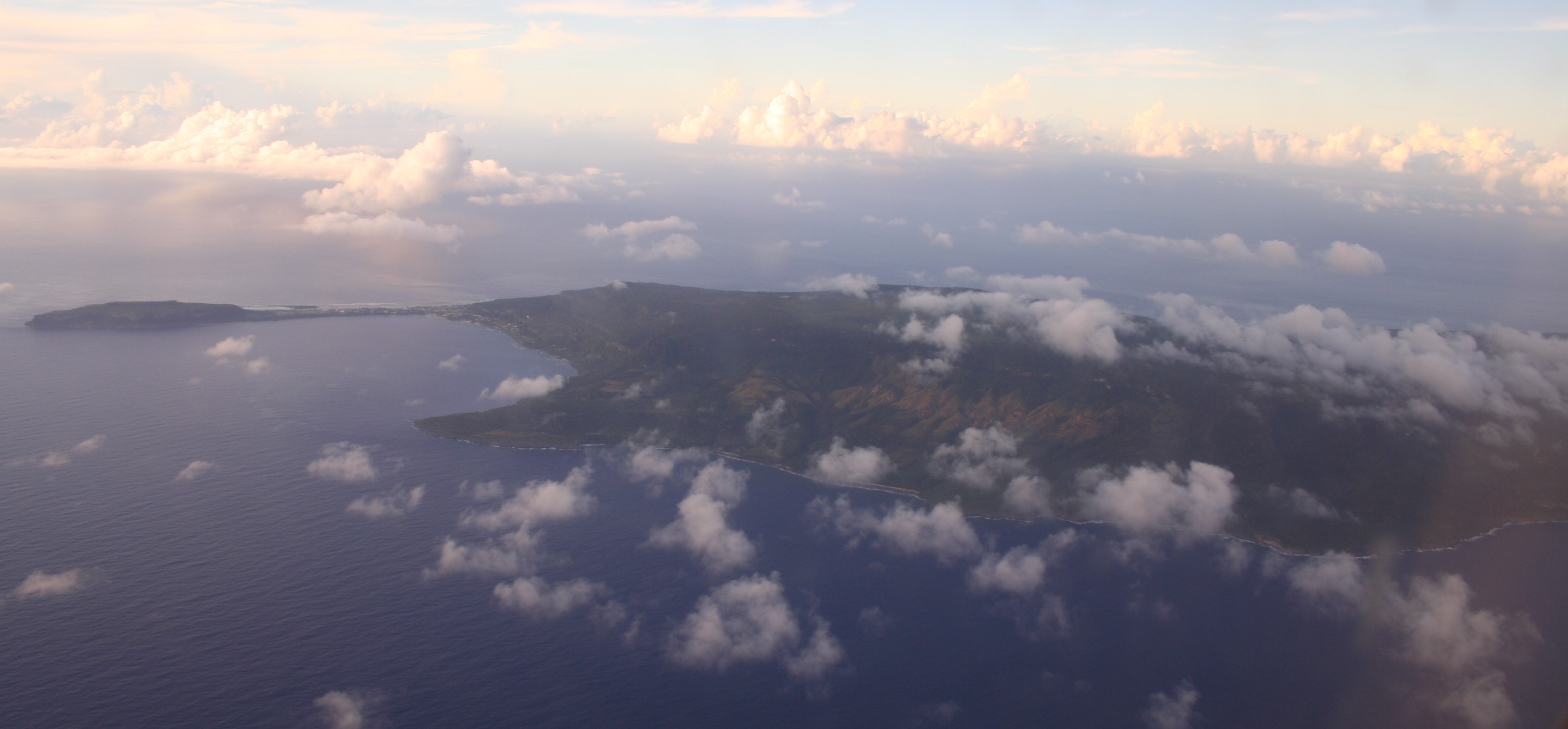Rota Avian Behavioral Ecology Program
University of Washington, Psychology Department |
|
Home • The Team • The Research • The Island • The Birds • Photos • Links • Sarah's Blog |
|

|
Rota is approximately 10.5 miles long by 3 miles wide and has an area of about 33 square miles. The annual mean temperature is 83 degrees Fahrenheit with little seasonal variation. The wet season lasts from July to October, and year round humidity ranges from 79 to 86 percent. Although there are a few inhabitants on the northern islands in the CNMI, most of the population lives on Saipan, Tinian, or Rota. There are approximately 3500 people living on Rota most of which are concentrated in two main villages, Sinapalu and Song Song, and are of Chamorro descent. Rota has been less developed than Saipan or Tinian, so it retains much of its natural beauty including healthy coral reefs, lush tropical forests, and wildlife. Known locally as "Nature's Treasure Island," the local government is working to increase ecotourism as a means of boosting the local economy. The history of Rota and the Marianas is also a source of interest to many visitors. The islands were first settled around 3000 B.C. by seafarers from southeast Asia or Indonesia. These people became known as Chamorros and have a long and rich history. Using large stones, known as latte or taga stones, they developed a unique style of building that still remains a mystery in the Pacific. Spain was the first European nation to visit the islands in 1521. Spain soon claimed them as a colony and so they remained for nearly 400 years. In 1899, Spain sold the islands to Germany. However, German possession was short lived, and following WWI the League of Nations turned administration of the Marianas over to Japan. They were an important asset for Japan during WWII, but following the Japanese defeat, the United Nations designated them a trust territory of the U.S. Islanders chose to become a commonwealth of the United States in 1978 and are now considered U.S. citizens. |
For more on
history visit: http://www.cnmi-guide.com/history/ |
|
[include_copyright.htm] |
[include_footer.htm] |
